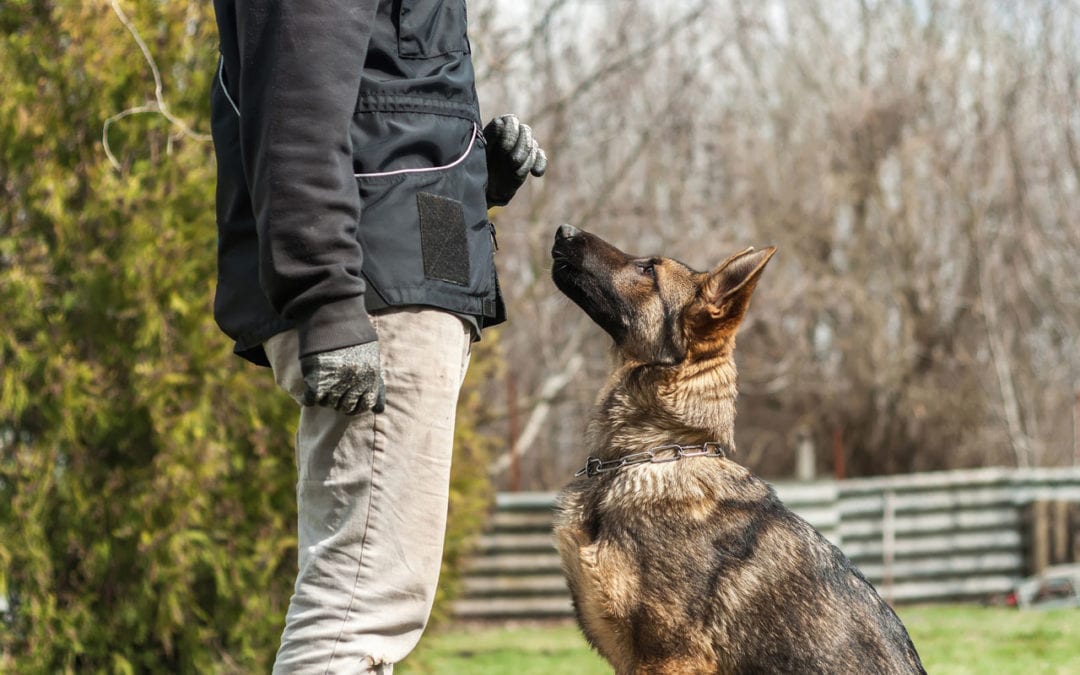
Dog training is an important aspect of owning a dog. Every owner wants a well-behaved dog that can understand and follow commands. This is where dog training comes in. There are various dog training courses available that cater to different aspects of training, such as basic obedience training, behavior modification for bad behaviors, advanced obedience training, and assistance dog training. These training courses aim to provide practical skills and hands-on experience to dog owners or potential professional dog trainers. In this article, we will discuss the different aspects of dog training courses and their benefits.
Benefits of a Dog Training Course
Dog training courses offer numerous benefits for both dogs and their owners. Proper training is a crucial part of responsible dog ownership and can have a positive impact on a dog’s behavior and obedience levels while also increasing their confidence and comfort in different situations.
A well-trained dog is a joy to live with. They are more well-behaved and are less likely to engage in bad behaviors like chewing furniture or jumping on people. They are also more confident in new and unfamiliar situations. This makes them happier and more comfortable, which in turn makes their owners happier too.
Enrolling in a dog training course provides numerous benefits for both the dog and the owner. The owner gains practical skills for working with their dog and learns effective methods for behavior modification. This helps dogs overcome problematic behaviors and develop good habits. It also lays a foundation for advanced training skills.
Another benefit of taking a dog training course is that it can deepen the bond between the dog and owner. As you learn to communicate better with your dog and gain insight into their behavior, you become closer to them. This, in turn, fosters a stronger and more positive relationship.
General Dog Training Terms
General Dog Training Terms: If you are new to dog training, you’ll quickly learn that there are many terms and concepts to understand. From basic obedience commands to advanced training techniques, it is important to have a solid grasp of the fundamentals when teaching your dog new skills. In this article, we will provide a brief introduction to some general dog training terms to help you get started.

Obedience Training
Obedience training is one of the most important aspects of owning and caring for a dog. It is the foundation of building a well-behaved dog, and it helps in establishing a strong relationship between the owner and the dog. Obedience training involves teaching the dog basic commands like sit, down, stay, recall, focus, heel, place, and crate training. These commands help the owner to control the dog’s behavior and actions.
Positive reinforcement training is a successful method of teaching obedience training. This training method uses food luring, hand commands, and voice commands to teach the dog basic obedience commands and improve their behavior. Positive reinforcement training focuses on rewarding the dog for good behavior while ignoring bad behavior. This method of training encourages the dog to repeat good behavior and learn new skills.
Obedience training has many benefits for the dog owner as well as the dog. A stronger bond is established between the owner and the dog through obedience training. The dog learns to trust and rely on the owner, and the owner learns to communicate better with the dog. Obedience training also improves the dog’s behavior, making them more well-behaved and less likely to exhibit bad behaviors.
One of the most significant benefits of obedience training is its use in preventing behavioral issues and bad behavior in the dog. By training the dog in basic obedience commands, the owner can establish their authority over the dog. This authority encourages the dog to look to the owner for guidance, making them less likely to exhibit bad behaviors or develop behavioral issues.
Overall, obedience training is a crucial aspect of dog ownership. It establishes the foundation for a well-behaved and well-trained dog, improves communication between the owner and the dog, and helps in preventing behavioral issues. With the use of positive reinforcement training and basic obedience commands, owners can establish a strong bond with their dogs and enjoy their companionship without worrying about bad behavior or disobedience.
Behavior Modification
Behavior modification is a technique used to address unwanted behaviors in dogs. This method of training recognizes that dogs may exhibit certain behaviors that are undesirable or even dangerous for themselves and others. Whether the dog is displaying signs of anxiety or aggression, behavior modification techniques can be effective in addressing these issues.
One of the most popular methods of behavior modification is positive reinforcement. This type of training rewards the dog for performing desirable behaviors, such as following commands or not barking excessively while ignoring negative behaviors. Positive reinforcement is a humane and effective way of teaching dogs what is expected of them.
Another approach used in behavior modification is negative punishment, which involves taking away positive stimuli such as attention, food, or toys when the dog displays negative behavior. This approach teaches the dog that its actions have consequences and can help eliminate undesirable behavior.
Desensitization is another behavior modification technique that can help dogs overcome fears or phobias. This method involves gradual exposure to the stimulus that triggers the dog’s fear while providing positive experiences and rewards. Over time, the dog can learn to tolerate the stimulus without exhibiting a fear response.
Some of the most common behavioral issues that dogs exhibit include separation anxiety, aggression toward humans or other dogs, and excessive barking. Separation anxiety is a condition where the dog becomes distressed when left alone, leading to destructive behavior or excessive barking. Aggressive behavior can manifest as growling, snarling, or biting, and can often be triggered by fear or anxiety. Excessive barking can also be a sign of anxiety or boredom and can lead to complaints from neighbors and other issues.
Behavior modification can have numerous benefits, including improving the dog’s quality of life, strengthening the bond between the owner and the dog, and reducing the risk of relinquishing the dog to a shelter. By addressing unwanted behaviors, owners can create a more positive and fulfilling relationship with their furry friends and ensure that they can live happy and healthy lives.
Positive Reinforcement
Positive reinforcement is a crucial aspect of dog training that involves rewarding a dog for performing good behavior instead of punishing unwanted behavior. This approach to training helps the dog understand what is expected of them and builds a stronger connection between the dog and their trainer.
Compared to punishment-based training approaches, positive reinforcement offers a more humane and effective way of encouraging good behavior. Unlike punishment, positive reinforcement doesn’t instill fear or anxiety in dogs and instead helps them feel confident and willing to work with their trainer.
Examples of positive reinforcement techniques include treats, verbal praise, or playtime, and they should be given immediately when good behavior is exhibited. Timing is key when providing rewards, as this helps the dog understand that their behavior was desired.
The benefits of using positive reinforcement methods are numerous. Not only does it improve communication between dog and trainer, but it also leads to improved behavior, increased confidence in the dog, and a strengthened bond between dog and trainer.
It’s important to note that once a good behavior is consistently performed, introducing intermittent reinforcement can be beneficial. Intermittent reinforcement involves gradually reducing treat rewards, to prevent the dog from becoming overly dependent on treats.
Overall, positive reinforcement is a highly effective and impactful way of training dogs and should be a priority for anyone looking to improve their dog’s obedience and behavior.
Bad Behaviors and Behavioral Issues
Bad behaviors and behavioral issues are common challenges that arise in dogs, and they can be frustrating for pet owners to deal with. However, with proper training techniques and positive reinforcement, these issues can be addressed and even resolved altogether.
Aggressive behavior is one of the most concerning behavioral issues, as it can pose a threat to both humans and other dogs. Identifying the root cause of the aggression is critical, as it can stem from frustration, fear or anxiety, or simply territorial instinct. Positive training techniques can be used to teach the dog to redirect their attention from aggressive behaviors and reward them for good behavior.
Separation anxiety is another common issue. This occurs when dogs experience distress when they are separated from their owners. This can lead to destructive behavior, such as chewing or digging. To address this issue, pet owners can engage their dogs in activities that keep them mentally stimulated, and gradually increase the duration of time when the dog is separated from the owner. Positive reinforcement can also be used to reward the dog for good behavior when left alone.
Chewing, digging, barking, biting, and jumping are additional bad behaviors that can arise in dogs. These behaviors can be caused by boredom, anxiety, or lack of proper training. Positive reinforcement techniques can be used to redirect the dog’s attention to more acceptable behaviors. Consistent commands and rewards, along with providing plenty of exercises and mental stimulation, can also help to address these behaviors.
Types of Dog Training Courses
Dog training courses provide an opportunity for pet owners to train their furry companions and address various behavioral issues. These courses come in different forms, from basic obedience to advanced training skills, and are suitable for dogs of all ages and breeds. In this article, we’ll explore the different types of dog training courses available and what they entail, so you can choose the best fit for you and your furry friend.
Professional Dog Trainer Programs
If you have a passion for training dogs and want to turn that passion into a career, enrolling in a professional dog trainer program can help you get started. Professional dog trainer programs are designed to provide students with the necessary knowledge, skills, and hands-on experience needed to become a successful dog trainer.
Professional dog trainer programs generally include comprehensive training in obedience training methods, behavior modification techniques, and other aspects of dog training. You will learn how to address various behavioral issues that dogs may exhibit, such as aggression, anxiety, and fear. You will also learn how to train dogs for specific tasks, like assisting the disabled or working in law enforcement.
One of the most well-known professional dog trainer programs is the Highland Canine Training program. This program offers hands-on training in obedience, behavior modification, and service dog training. It also includes a certification program upon completion. The Master Dog Trainer Program is another program that provides in-depth training for aspiring professional dog trainers. This program offers hands-on training in obedience training, behavior modification, tracking, and protection training.
If you’re interested in specializing in a specific area of dog training, there are also programs available that focus on service dog training or therapy dog training. These programs provide comprehensive training in these specific areas and also offer certification programs upon completion.
Certification is an important aspect of professional dog trainer programs. It serves as proof of your knowledge, skills, and training, which can help you establish credibility and attract clients. Many professional dog trainer programs offer certification programs upon completion that demonstrate your skills and expertise as a trained professional.
Practical Skills Courses
If you’re looking to become a professional dog trainer, practical skills courses are an essential part of a dog training course. These courses offer hands-on experience in dog training and provide practical skills that are necessary for getting hired in a dog training business. Here are some of the practical skills courses that you can expect to take in a dog training course:
Obedience Training: Obedience training is an essential part of dog training. In these courses, you’ll learn how to teach dogs basic commands such as sit, stay, come, and down. You’ll also learn how to teach dogs more advanced commands such as heel, stand, and rollover.
Behavior Modification: Dogs may exhibit bad behaviors such as jumping, biting, and aggressiveness. Behavior modification courses teach you techniques to correct these behaviors and help dogs become well-behaved and obedient.
Positive Reinforcement: Positive reinforcement is a very effective training method that involves rewarding dogs for good behavior. In these courses, you’ll learn how to use positive reinforcement to teach dogs new behaviors and encourage them to repeat good behaviors.
Correcting Bad Behaviors: Correcting bad behaviors is an essential skill for a dog trainer. These courses teach you how to recognize and correct bad behaviors such as barking, jumping, and biting.
In addition to these courses, you can also learn about other important aspects of dog training such as dog grooming, health and nutrition, and training specific breeds. Practical skills courses provide hands-on experience in dog training and help you develop the skills that are essential for a successful career as a dog trainer.
Service Dog Courses
If you are interested in training service dogs, there are various courses available to help you specialize in this field. Service dogs are highly trained dogs that assist individuals with disabilities. Proper training is essential for both service dogs and their handlers to ensure that they can work together effectively as a team.
The purpose of service dogs is to help individuals with disabilities to live and function more independently. Service dogs can assist with mobility, hearing, and sight impairments, and can even detect seizures and other medical conditions. They also provide emotional support to their handlers, helping them to manage anxiety, depression, and other mental health conditions.
Service dog courses provide in-depth information on Service Dog legislation and prepare you to select, socialize, and train service dogs to perform specialized tasks. These courses provide you with the knowledge and skills needed to work effectively with individuals with disabilities and to train service dogs to meet their specific needs.
Some examples of service dog training include selecting dogs with the appropriate temperament and training them to be comfortable and responsive in various environments. Socialization is also an essential aspect of service dog training, ensuring that the dogs can remain calm and focused in public places and around other people and animals.
In addition to these skills, service dog training can also involve teaching dogs specialized tasks based on their handlers’ needs. For example, service dogs for individuals with mobility impairments may be trained to retrieve dropped items, open and close doors, or even pull a wheelchair. Similarly, dogs for individuals with hearing impairments can be trained to alert their handlers to important sounds and environmental cues.
Overall, the Service Dog Trainer Program provides a comprehensive education on service dog training, preparing you to work effectively with both dogs and their handlers to ensure they can live and function more independently and safely in society.
Hands-On Experience in a Dog Training Course
When it comes to dog training, there is no substitute for hands-on experience. While theoretical knowledge is essential, it’s the practical skills that make the difference between a good trainer and a great one. In a dog training course that offers hands-on experience, participants have the opportunity to work with dogs directly, learning practical skills, and gaining confidence in their abilities. This type of training is especially helpful for those interested in pursuing careers in training or starting their own training business.

Private Lessons for International Students
The School for Dog Trainers recognizes that international students have unique needs when it comes to dog training education. That’s why they offer private lessons to allow these students to receive personalized instruction from an experienced dog trainer.
Private lessons give international students the chance to have one-on-one time with a professional dog trainer to focus on their individual goals and needs. This personalized approach ensures that they are receiving the attention and guidance they need to become successful dog trainers.
Flexibility in scheduling is also a significant benefit of private lessons, especially for international students who may not have the time to attend regular group classes. Private lessons can be arranged around their busy schedules, allowing them to get the most out of their time at the School for Dog Trainers.
Overall, private lessons are a valuable addition to the education of international students who want to become professional dog trainers. By providing them with personalized instruction and flexibility in scheduling, they will gain skills and knowledge that will be beneficial for their future careers.
Group Classes and Workshops
PetSmart’s Accredited Pet Trainers offer a variety of group classes and workshops suitable for dogs of all ages and breeds. Group classes are designed to be interactive, with a maximum of ten dogs in each class. This ensures a personalized approach to teaching and allows the trainers to focus on each dog’s individual needs. Classes range from six to eight weeks, with one-hour sessions held once a week.
Throughout the group classes, PetSmart’s Accredited Pet Trainers use positive reinforcement techniques to teach basic obedience skills such as sit, stay, and come as well as more advanced topics such as loose leash walking and off-leash training. Patience and consistency are key elements of the curriculum, with trainers guiding pet parents through positive reinforcement techniques to achieve desired behaviors in their pets.
The classes provide an ideal environment for socialization and communication skills for both pets and pet parents. Dogs learn to interact with other pets, and people, and understand commands in a group setting. Pet parents can also exchange training tips, making it an opportunity to build a support network with fellow dog owners who share the same goals.
PetSmart offers different levels of dog training classes for puppies, adult dogs, and advanced canine training classes. The savings package offered by PetSmart is a great deal, which allows pet parents to bundle multiple classes together at a discounted rate.
For graduates of the training courses, PetSmart offers a variety of workshops, including therapy dog training and advanced training in special tricks. These workshops allow pet parents and their pets to learn additional skills and build on their previous training experiences.
Conclusion
In conclusion, enrolling in a dog training course can offer numerous benefits for both professional and personal growth. Not only does it provide the opportunity to learn effective methods for training dogs, but it also helps to improve communication and socialization skills for both pets and pet owners.








